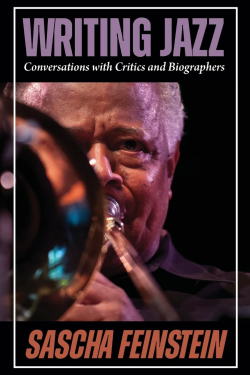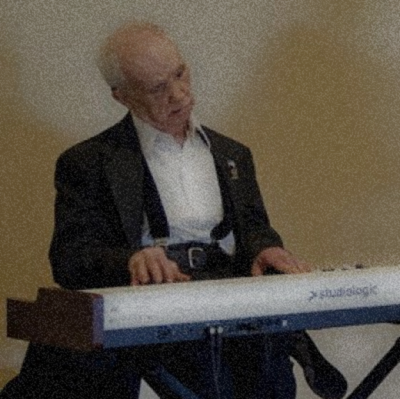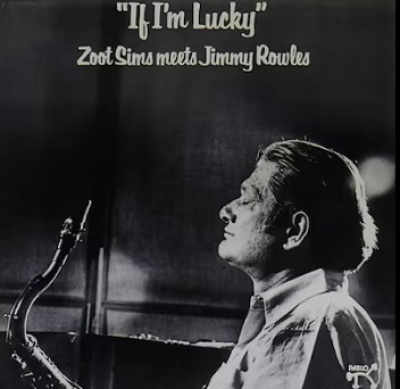Author John Fraim is a very interesting man. Taking on a subject like John Coltrane is not a left-brain experience. He knew wisdom and historical perspective were required before writing about a complex, musical prophet, and wrote this biography the way Coltrane lived his life In his award-winning book, Spirit Catcher, The Life and Art of John Coltrane, he presents Coltrane’s life as spiritual quest, and in it creates a piece of art not often found in biographical form.
“While I really wasn’t that conscious of it at the time, I think Spirit Catcher was written almost as something between therapy and jazz improvisation. In a sense, I was practicing what I was “preaching” in the book, showing Trane’s style with the writing itself. A key element in this was that I was discovering Coltrane for the first time. One of the things many readers mention to me is that the book has this air of discovery in it. Certainly it is not coming from a Coltrane expert. Rather it has the feel and excitement of finding something. I think this something was overall the power and magic of music.”
We spoke with John Fraim in October, 1999.
JJM: What novel made the biggest impact on your life prior to your writing Spirit Catcher?
FRAIM: Probably Henry Miller’s Tropic of Cancer. It showed me that art can be improvisation rather than simply a planned structure, that its the things between the lines which are often the most important.
JJM: What is the background around Spirit Catcher?
FRAIM: I was living in the Bay Area in the early 80s and had just left work with a large international corporation and trying to find a new direction in my life. Something that motivated me and gave me faith that the world was more than big corporations. Jazz performed this particular type of “rescue” operation for me at this time.
For a few years during the late 70s, I had been writing a newsletter called The Jazz Review as well as volunteering for a group called Loft Jazz and catching many live performances in all types of venues. It was an exciting time and I was meeting many artists. In many ways, it was like the return of an old friend of my past that I had lost touch with for a number of years. I had grown up listening to much jazz as my father was a real jazz fan and had a jazz band way back in the 40s. Music had always been an important part of my life and I had started a few rock bands in high school and college. However, jazz came back into my life in a big way when I listened to an album in 1978 called Inner Voices from McCoy Tyner. I listened to everything Tyner did and then worked my way back to Trane. The first Trane album I listened to was A Love Supreme. Spirit Catcher started as another few sections in my Jazz Newsletter but just kept going. When I finished it I gave it to a number of friends. It was written on an old Royal typewriter and I never changed the ribbon so the ink on the page got lighter and lighter until during the last parts it was almost impossible to read. I gave the manuscript to a few friends to read. One was Kevin Starr, head of the San Francisco Public Library at the time. Kevin loved it, writing that I had “mastered a very difficult art form – the writing of jazz criticism. Not since Ralph Gleason have I read such superb analysis of jazz. I wish he was writing for the Bay Area.” Kevin sent it off to his friend and then sent it off to his friend Sheldon Meyer, VP of Oxford University Press and Sheldon wrote back that “a lively and most informative book, well researched.” However, he felt that it had too many spiritual undertones for Oxford, that they did not have access to this market.
I put the manuscript in the drawer and didn’t get it out until 1985 when I had an office in the Fantasy Film Building in Berkeley. The great jazz producer Orrin Keepnews (who produced Tyner at Milestone in the 80s as well as Monk on the old Riverside label) also had an office at Fantasy. I gave a copy of the manuscript to Orrin. And, when McCoy Tyner performed at Keystone Korner in the mid-80s, I gave a copy to McCoy after his performance. In ways, this seemed really the final destination of the book – a type of long thank you letter to these two people. Nothing much more seemed necessary at the time.
Then, a musician friend in the Fantasy Building suggested I send it to a top literary agent he knew in New York. I did and they were excited about it and it ended up being represented by them for a year but they couldn’t sell it and I put it away again.
During the next few years, a few people saw the manuscript and encouraged me to publish it myself. Perhaps the major encouragement during this time came from Cotrane’s producer, the late Bob Thiele. I sent Bob a copy of the manuscript and he excitedly called me saying that it was “a terrific story” and “most enlightening in facets of Coltrane’s life even I didn’t know about. I had to read the book twice because it was so fascinating.” Bob added, the “book knocked me out!” This was the final thing to give me faith to publish it myself. I decided to do this and scanned the manuscript into a Mac computer and then divided it into chapters. The division into chapters and the books overall structure was greatly influenced by the structure of Trane’s A Love Supreme. The book is divided into Disciple, Prophet and Spirit and there is a direct relationship to the divisions of A Love Supreme. I also wanted to give the life of Coltrane the drama it deserved. The order I used was based also on age old dramatic structure as well as modern film structure.
I published it and it was picked up by Atrium Publishers, one of the largest book distributors in America at the time. Within a few months it rose to the top 1% in sales of all their thousands of books while receiving many great reviews around the nation. Then, Atrium went bankrupt and I was left with finding another distributor. I did and the book continued to sell. In 1997, it was awarded the Small Press Award for Best Biography.
JJM: How was the book actually written?
FRAIM: While I really wasn’t that conscious of it at the time, I think it was written almost as something between therapy and jazz improvisation. In a sense, I was practicing what I was “preaching” in the book, showing Trane’s style with the writing itself. A key element in this was that I was discovering Coltrane for the first time. One of the things many readers mention to me is that the book has this air of discovery in it. Certainly it is not coming from a Coltrane expert. Rather it has the feel and excitement of finding something. I think this something was overall the power and magic of music. I felt an important thing in this discovery was to try to put myself into Coltrane’s mind and important for this it seemed that I should progress through his discography in a chronological order rather than haphazard listen to something from the early years and then the later years. To me, artists are much more interesting when their art is placed within the context of their period of time as well as their overall artistic output. For this reason, I surrounded myself with the music and events of the time surrounding the particular music of Trane. This included the leading music in rock and other areas as well as overall events of culture such as the top books, films, TV programs and politics. I always wrote with the music of the time in the background. For instance, in writing about Trane in the mid-60s, I listened a lot to the Byrds Eight Miles High.
It helped that I had a lot of friends who helped find all of Coltrane’s music. One was a top DJ on the famous old KRE-AM in Berkeley, one of the last progressive jazz stations before they were bought and changed by Inner City Broadcasting. It also helped to have a great used record store like the old Leopolds in Berkeley where you could find and buy almost any jazz album you could think of for a dollar or so.
JJM: Any future plans for the book?
FRAIM: I would like to say that there is a movie coming. Not necessarily from Spirit Catcher but rather something based on Trane’s life. And perhaps Tyner’s life. The stories or great artists lives is far more interesting to me than all of those biographies of politicians and movie stars we constantly are exposed to on television today. Films like Clint Eastwood’s Bird goes a long way in this area but I would like to see more exploration here. I think people like Spike Lee, Saul Zaentz (owner of Fantasy Films and Milestone records as well as producer of Amadeus), and Clint Eastwood would be ones to consider doing this.
JJM: In your opinion what was the defining non-musical event in Coltrane’s life?
FRAIM: Kicking his heroine habit in the late 50s.
JJM: Who was Coltrane’s musical soulmate?
FRAIM: I would say Thelonious Monk. It was Monk’s crazy antics which always made Trane laugh. Yet it was also the spaces Monk left in his music which gave Trane room to explore and try and fill them. But Calvin Massey and Yusef Lateef were also certainly close to Trane.
JJM: At the time Miles Davis invited Coltrane back into his band in the late 50s group, Miles’ music was, as you describe it, “sophisticated simplicity”. Coltrane’s music at the time was ever increasing in its complexity. In retrospect, was this merger a calculated move by Miles or was it a “beautiful accident”?
FRAIM: Its an interesting question. I think you could say that Miles went a long way towards setting up beautiful accidents. Take the album Kind of Blue (1959). The album presents frameworks to work in so you could say this was calculated on Miles’ part. Yet, these frameworks were conceived only hours before the recording session. The result is astonishing. There are few higher things in music than listening to Trane come in on “So What.” In a way, it signals his powerful re-entry into the forefront of music.
JJM: What is the defining Coltrane recording prior to A Love Supreme?
FRAIM: A good question. For me I would say Giant Steps (1959) because it opened up a lot of new possibilities to Trane and cleared the way for his revolutionary music in the 60s when he led his own group.
JJM: Would you consider Coltrane a “heroic” figure?
FRAIM: Yes I would because my greatest heroes are artists and Trane certainly was one of the great artists of our era. But sometimes there is a fine line between great heroic and great tragic figures. His efforts to push the boundaries of music were definitely heroic. Yet some might say that the ending years of his life were tragic – he died relatively young (41 years old) and his music was becoming increasingly difficult to understand (Interstellar Space). Overall, Coltrane’s life progressed very much like the sections of his A Love Supreme – from “acknowledgement,” then “pursuance,” to “resolution” and finally to “psalm.”
JJM: What is John Coltrane’s legacy?
FRAIM: I think Trane will be remembered as the person who brought spirituality into music of the modern era.
JJM: What are you doing now?
FRAIM: I’ve just moved to Sonoma County, an hour north of San Francisco. I have other projects with my publishing company Great House. Also, I was asked by my friend Ben Stone, Director of the Sonoma County Economic Development Board to help start a jazz society up here.
JJM: Where can one get a copy of Spirit Catcher?
FRAIM: It should be available in most bookstores. If you can’t find it, you can get it from Amazon.Com by clicking on the link below.
Spirit Catcher
The Life and Art of John Coltrane
John Coltrane products at Amazon.com
_______________________________
*
If you enjoyed this interview, you may want to read our interview with John Coltrane pianist McCoy Tyner.










































